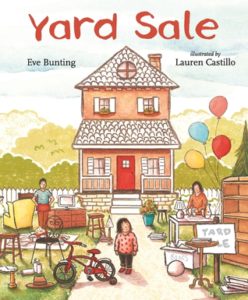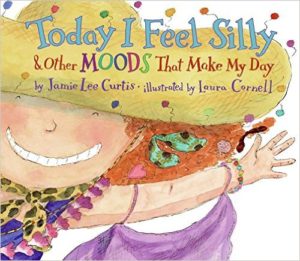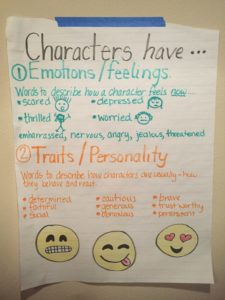 Why I Picked It Up:
Why I Picked It Up:
Simple: Eve Bunting. Any time I’m looking for an approachable book for elementary students with great content, I go to Eve Bunting. This book did not disappoint.
Why I Finished It:
This is a beautiful story of a family having a yard sale because they must move into a tiny apartment. The little girl is having a hard time grasping why they are moving and watching all of their belongings being bought by other people. The entire time, her parents are supporting her and trying to make the move as positive as possible, but it becomes evident the move was not by choice. In the end, the little girl realizes that it’s the people in her family, not things, that are important. The story moves quickly, with passion, and it would have been difficult to not finish.
Who I Would Give It To:
First, and perhaps most obvious, it is great for families who are having to downsize. This book would be a great family share. In classrooms, it would be great as a read aloud or as a mentor text. I believe it would be a strong book to activate schema on the emotions of moving and needs vs. wants.
Integration Ideas:
Characterization, Making Inferences, Making Connections, and Writing Response
Yard Sale is told through the perspective of the little girl. She goes through a whole host of emotions, which are portrayed through her dialogue and actions. This story would be a great way to discuss character analysis. Read through the story once, just for fun. Then go back and analyze the little girl’s character.
Before discussing the character traits in books, however, it is important that the class has already begun to discuss vocabulary and different traits. For older students, I suggest separating out character traits and character feelings. A few books I love to begin discussions on character vocabulary are: Today I Feel Silly: And other moods that make my day and The Way I Act. With my students, I start a word bank. Here is an example of one created in another classroom. While you might use an already-created word bank as a starting point for your class’s thinking, it is important that you and your students create your own!
the character traits in books, however, it is important that the class has already begun to discuss vocabulary and different traits. For older students, I suggest separating out character traits and character feelings. A few books I love to begin discussions on character vocabulary are: Today I Feel Silly: And other moods that make my day and The Way I Act. With my students, I start a word bank. Here is an example of one created in another classroom. While you might use an already-created word bank as a starting point for your class’s thinking, it is important that you and your students create your own!
Once students are armed with a strong vocabulary to begin discussing character feelings and traits, go back to the Yard Sale. Find places to stop in the book, and allow time for students to discuss how the little girl is feeling. Make sure they are supporting their inferences with text evidence. When I used this story with students, I read the first two pages –
Almost everything we own is spread out in our front yard. It is all for sale.
We are moving to a small apartment.
“Small but nice,” my mom told me.
She and Dad took me to see it.
He showed me the fun bed that came down from the wall. “Look,”
he said. “It’s right in the living room.”
“It’s all nice,” I said. But it didn’t feel like ours.
I asked students how they think the little girl is feeling about selling her stuff and moving. Sure they will say “sad”  at first. But have students take out their word bank and think a little more deeply about how she’s feeling. I prompted my students towards higher level, more descriptive words, such as unsure, blue, lonely. Once the students decided on the appropriate word, they had to use text evidence from the story to support their chosen emotion. Some students used the picture on the first page, which shows the little girl sitting along on her steps in front of her stuff to be sold with her sad face resting in her hands. Others used the last line where she says, “But it didn’t feel like ours.”
at first. But have students take out their word bank and think a little more deeply about how she’s feeling. I prompted my students towards higher level, more descriptive words, such as unsure, blue, lonely. Once the students decided on the appropriate word, they had to use text evidence from the story to support their chosen emotion. Some students used the picture on the first page, which shows the little girl sitting along on her steps in front of her stuff to be sold with her sad face resting in her hands. Others used the last line where she says, “But it didn’t feel like ours.”
Once students use their text evidence, I have them discuss what they know about the particular feeling. Have they ever sat alone, upset about something. I ask them how they felt and what it made them feel like doing. Not only is this step of making personal connections helping to solidify the inference, but it is having the students connect to the character in order to get a deeper understanding of the story.
Continue to stop every so often as you read through Yard Sale and repeat the process. Throughout the story, the little girl reacts to her parents’ reactions, and she has a change of heart near the end.
Once you have read through the book again and analyzed the little girl. Have students respond in writing. They could write about a time from their experience that they thought about as you discussed the book, they could write a letter to the little girl, they could write how the character changed throughout the story, or another topic of their choosing.
Not only could students be making inferences about character of the little girl, they could and should make inferences as to why the family is moving. It never states why they are moving, but there are plenty of hints that it is not by choice the family is moving and they are all a little sad about it.
Text-to-Text Connections
Tight Times – In tight times, the boy is having to understand that his father lost his job and they do not have extra money. They are having to be more frugal.
Fly Away Home – In this story, a little boy and his father are homeless and living in an airport. The father is trying his best to change the situation for the little boy.
Those Shoes – The story connects because a little boy wants new name brand shoes like his friends, but his Grandmother doesn’t have the money. He is struggling with what he needs and what he wants.
What is your favorite Eve Bunting book?






Leave a Reply